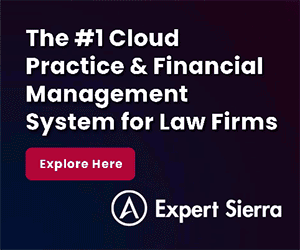Tiger Eye: Five key knowledge resources to feature in your law firm’s knowledge library
Effective Knowledge Management is about delivering the right information, to the right people, at the right time. With this, the aim of a knowledge library is to form a centralised “single source of truth” that your team can go to for organisational knowledge and collective expertise – whenever they need it.
In building a legal knowledge base, the aim is to curate an accessible know-how store which your firm can explore with ease, so that they spend less time searching for information and more time producing outcomes for clients. Legal knowledge bases typically house a broad range of resources, designed to support users in finding solutions – without having to ask someone for help. This is where the idea of ‘self-serving’ legal know how comes from. As law firms create and revise documents all day, every day, including contracts, resolutions, trusts, briefs, memorandums, wills, judgements, and pleadings, it’s common for these document-intensive organisations to manage a large quantity of knowledge articles, designed to support faster document drafting, review, and production.
But what exactly should go in a law firm’s knowledge library? For some, there’s still some mysticism around the subject. In our latest post, Dave Wilson, Managing Director at Tiger Eye and Blueprint User Community ambassador, explores this topic in depth, recommending five key resources for your law firm’s knowledge library.
Precedents
Reuse, reduce, recycle. In simple terms, precedents are examples of past work, that can be reused in future cases to reduce time waste and mitigate risk, by way of recycling the processes and procedures that led to past success. These types of knowledge articles are an important investment for all firms – irrespective of practice area – as they help lawyers to efficiently draft documents for clients, from everyday letters to complex agreements, contracts and forms.
Some firms choose to simply take names and personal data out of previous matter documents and house these in their know-how database, whilst others create composites of past examples, working in-line with certain standards and style guides, so that the precedent itself encompasses all of the best elements of multiple matter documents. It’s common for firms to refine the precedent’s language and grammar to meet company house styles, adding boilerplate text to ensure the precedent can be used in a range of cases. No matter the approach a firm takes, by seeing the way things were done before, lawyers can start every case with an increased level of understanding.
With this, precedents speed up the process of document creation, helping lawyers to ensure their documents are compliant, containing the correct details. Therefore, these knowledge articles offer firms an easy, fast and cost-effective way to boost productivity and control document consistency – cutting out discovery time or needless document refinement.
However, many law firm’s precedents will change as the organisation learns over time, adapting processes and services as they work on new cases. Precedents need to be regularly reviewed and amended as legislation and practice changes, to make sure that the document is current and up to date. With this, maintaining a precedent collection can be time-consuming and complex, without a solution supporting the up-keep process. This is where the right knowledge base can really underpin effective precedent management, as without the right technology at hand, managing alterations can be a difficult task.
Practice Notes
Practice notes are often written specifically for sharing within knowledge bases, to get information across easily and quickly to the firm as a whole, or specific practice groups.
Practice notes are guidelines produced to help lawyers understand a particular law or procedure. These types of knowledge article aim to provide clear and up-to-date explanations of elements of law and the practice of it, outlining how procedures should be handled and cases should be approached. Whist every case, every matter and every client is unique, practice notes ensure that legal teams are always armed with up-to-date advice in order to serve clients effectively.
Most firms will maintain a range of practice notes to offer guidance on a selection of important legal topics. For example, these documents may set out obligations and ethical considerations to consider when conducting a particular case or matter, providing useful information on the best way to support a client with a specific area of law. Practice notes can also give advice on the issues lawyers might face when considering taking a specific course of action, offering support in deciding how to comply with legal requirements.
With regulatory changes a frequent occurrence, practice notes are living documents, which need to be maintained effectively. Therefore, it’s important that practice notes are managed within a knowledge base that supports users in making these changes, as well as communicating amendments across teams and departments.
Glossaries
Let’s face it – the legal landscape can be complicated to understand. Even lawyers who have practised for years may still stumble across new terms and new acronyms every once in a while.
Whilst a quick search engine browse may bring up some relevant results, it can take lawyers valuable time to browse websites and sources to find information that they can truly trust. This takes energy – and it can distract from the task at hand. What’s more, when we’re rushed, we may not have time to check multiple websites to confirm the accuracy of our findings – so without an approved glossary, we risk letting incorrect data slip into our practice.
Your glossary could also link to key issue summaries and process timelines, explaining where key terms and elements play a part in the bigger picture of the way your firm operates. All of these resources help firms to ensure that as they grow, newly on boarded hires can quickly become fully productive – and spend less time searching for the information they need to fulfil their roles, ‘getting up to speed’ with tasks more quickly.
What’s more, giving your firm’s experts a chance to create glossaries and explanatory content is also a great way to give staff a sense of ownership of the knowledge that’s regularly used. Creating succinct descriptions of terms can be a difficult task, but if the process is collaborative, it can open up discussions amongst teams. And, as John C Maxwell wrote, “You never really know something until you teach it to someone else.”
Best Practice Guides
One of the many benefits of a Knowledge Library is that it is available 24/7. This means that theoretically, all users should be able to browse and access your tried-and-trusted expertise at any time of day and be able to make use of the range of know-how available at their fingertips.
Best practice checklists and guides can provide step-by-step guidance from specialised experts, so your team can quickly understand issues, tasks, and topics. In being written by experts, best practice guides can also include unique experiences from the practice of law, with lessons learned from particular cases embedded in such knowledge articles – and readily available for others to reflect upon. Whilst mentoring is still a critical approach to knowledge sharing within law firms, creating step by step guides can be a useful way to pass on expertise without the same level of one-on-one commitment, quickly explaining what your firm has learnt to be the best way to approach a task, case or situation.
Best Practice Guides can also help to adapt knowledge sharing to meet different individual’s needs, such as independent learners. More experienced lawyers could use a refresher on key topics and processes every once in a while, and most individuals would be happy to spend a few minutes browsing an approved step-by-step guide written by an expert – especially when, with the right technology at hand, they can search for and access it within seconds.
Legal Toolkits
For firms with more advanced KM resources, they may look to provide one-stop-shops for particular topics, cases or matters. Legal Toolkits are composite folders or documents that contain all relevant materials for a particular task, including precedents, practice notes, guides, checklists, and more.
The benefit of having all these items in a single space within a trusted KM library is that they can provide lawyers with a way to start every task running instead of walking, understanding what they need to do, when to do it – and how to go about achieving the best results for a client. Lawyers develop proficiency and expertise over time, and legal toolkits can be a great way to distil collective wisdom into knowledge assets that can be readily shared with practice groups.
Leading KM tools will enable KM Administrators to connect complimentary knowledge articles together, linking them so that the user can explore all that’s needed via an interconnected journey, seeing the context behind what they’re being presented with as they navigate. Seeing comments from other users and recommendations for areas of focus, the right KM platform can turn a Legal Toolkit – as well as all knowledge articles in a collection – into truly dynamic, interactive resources.
Conclusion
Now more than ever, as firms are beginning to adopt an even more flexible approach to the way they work, the importance of having knowledge readily available for users to access is critical to support users wherever or whenever they may be working.
Yet, with knowledge libraries designed to hold all that the firm relies upon to work effectively, almost every law firm’s know-how base will contain a unique range of content, to meet their team’s unique needs and areas of focus. So, whilst common types of knowledge article may be found across the sector, ultimately, your organisation’s knowledge library will be full of whatever matters most to your firm, your teams – and your clients.



